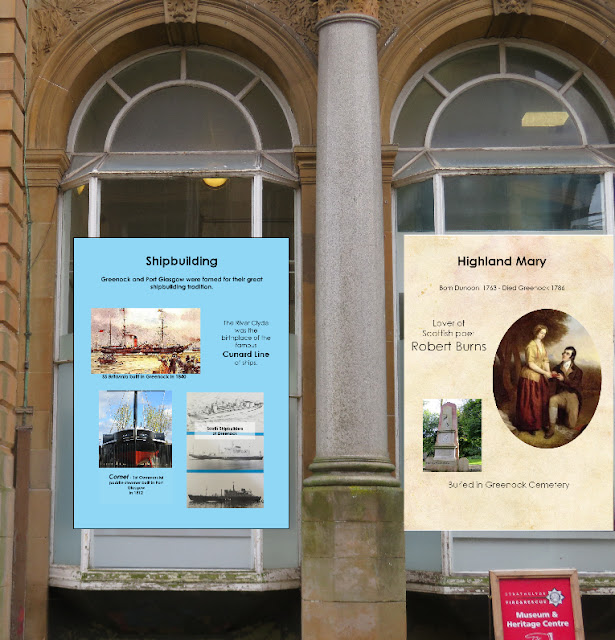In 1770s the antiquarian, Francis Grose (1731-1791), visited Newark Castle. Here's a drawing he made of the castle at that time.
 |
| Newark Castle, Port Glasgow, Grose |
Grose describes Newark Castle - "This was the castle or principal mansion of the barony of Finlaystun Maxwell, which about the middle of the fifteenth century, with diverse other lands, came to Sir Robert Maxwell of Calderwood, a younger son of the family of Nether Pollock, in right of Elizabeth, his wife, second daughter and co-heiress of Sir Robert Denniestoun, of that ilk. It continued in the possession of the Maxwell family for several generations, till sold by George Maxwell alias Napier, of Kilmahew, Esq; to Mr Cockrane, of Kilmaronock, about the beginning of the eighteenth century. It is at present the property of – Hamilton, of Wishaw, Esq; in whose family it has been for a considerable length of time.
 |
| "The Blessings of God be Heirin" above doorway at Newark Castle. |
 |
| Francis Grose |
Francis Grose was a London born antiquarian and writer who travelled throughout Britain noting the historical buildings and ruins he visited. In 1772 he published "The Antiquities of England and Wales" containing his drawings with a short description of the buildings they showed. In 1788\1789 he travelled widely in Scotland and later produced "The Antiquities of Scotland" which included Newark Castle.
 |
| The ruins of Alloway Kirk, Grose |
While in Scotland in 1789, Grose met the poet Robert Burns who suggested that he included Alloway Kirk in his writings. Grose agreed to this on condition that Burns would write a story about a witch to go along with the drawing. This led, in 1790 to the famous Burns work - "Tam O'Shanter" being included in the second volume of Grose's "Antiquities of Scotland".
The pair became good friends and Burns wrote to Frances Dunlop:- "I have never seen a man of more original observation, anecdote and remark ... If you discover a cheerful-looking grig of an old, fat fellow, the precise figure of Dr Slop, wheeling about your avenue in his own carriage with a pencil and paper in his hand, you may conclude: "Thou art the man!". (Dr Slop is a character in "Tristam Shandy" (1759) by Laurence Sterne.)
Burns and Grose kept up a correspondence. Burns wrote a poem for his friend, and also this epitaph -



.JPG)
.JPG)



.JPG)